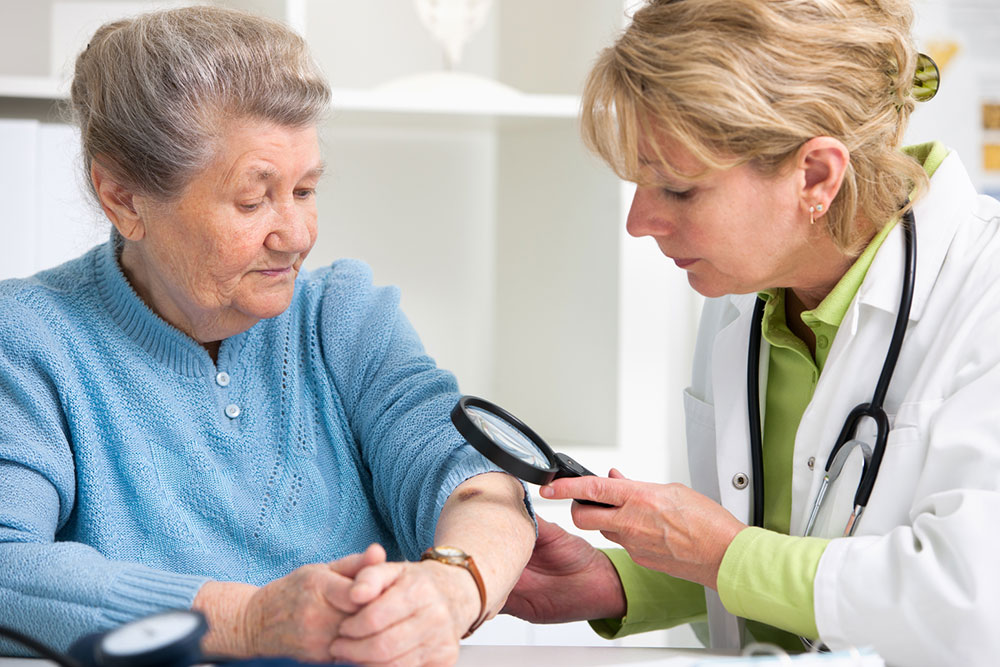11 silent signs of skin cancer

Skin cancer is a prevalent concern in our country, especially in regions exposed to harmful ultraviolet (UV) sun rays. While many people are familiar with its tell-tale signs like suspicious moles or skin changes, the condition has several other symptoms, too. Sadly, these signs of skin cancer often go unnoticed or are mistaken for less-severe skin issues, leading to a delayed diagnosis. Here are a few silent indicators of the condition to watch out for.
Persistent itching or pain
Skin cancers like basal cell carcinoma and melanoma can cause persistent itching, pain, or discomfort in the affected area. These sensations are often more than just a temporary annoyance; they may signal an underlying issue. If individuals experience continuous itching or pain that does not subside, or if it appears unrelated to any recent injury or rash, they should consult a dermatologist for a thorough evaluation.
Changes in the nail beds
A person’s nails can provide important clues about their overall health, including the potential presence of skin cancer. Skin cancers can develop under or around the nails, affecting the nail beds. People must be vigilant for any unusual changes in their nails, such as discoloration, dark streaks, or alterations in the shape of their nails. While not all nail changes indicate skin cancer, they should be evaluated by a healthcare professional.
Unusual scaly patches
Dry skin is a common condition, but it is time to act if one notices scaly, crusty, or rough patches that do not improve with moisturizing. These persistent scaly patches could be a subtle sign of skin cancer, particularly if they exhibit changes over time. It is essential to pay close attention and seek expert advice upon noticing these concerning changes.
Spontaneously bleeding lesions
Spontaneously bleeding lesions on the skin are a critical warning sign for skin cancer. These lesions, which may manifest as sores, scabs, or open wounds, can bleed without apparent cause or trauma.
Pale or translucent bumps
Basal cell carcinoma, one of the most common forms of skin cancer, often emerges as pale or flesh-colored bumps on the skin. These bumps may bear a translucent quality, making them appear deceptively harmless. However, they tend to bleed or ooze and can be mistaken for pimples or benign skin conditions. If one has concerns about such bumps, they must seek professional evaluation to rule out skin cancer.
Red or pink growth
Skin cancer, including squamous cell carcinoma, can manifest as a reddish or pinkish growth on the skin. These growths often appear shiny and smooth, which may lead individuals to dismiss them as benign. However, the seemingly harmless growths should not be ignored, as they could point toward skin cancer. If one notices these characteristics, one must be cautious and consult a healthcare professional.
New or growing moles
While most people know the importance of checking for changes in existing moles, they fail to monitor the emergence of new ones. A new mole or an existing mole that begins to grow in size, change color, or develop irregular borders should raise an alarm. These changes can be subtle and easily overlooked, emphasizing the importance of regular self-examinations and professional skin checks.
Numbness or tingling sensations
If skin cancer infiltrates the nerves, it can lead to unusual sensations like numbness or tingling in the affected area. While numbness alone may not always be a direct indicator of skin cancer, it should not be overlooked, especially when accompanied by other concerning skin changes. Any persistent numbness or tingling unrelated to a specific injury or health condition should prompt one to seek a dermatologist’s evaluation. These symptoms could potentially signify the involvement of skin cancer. An early diagnosis and appropriate intervention are crucial in such cases.
Chronic redness
Prolonged redness or inflammation in an area of the skin is another subtle sign. While skin redness can occur for various reasons, including irritation and allergies, it becomes a cause for concern when it persists despite using remedies or treatments. If one experiences chronic redness without a clear explanation, one should consult a dermatologist for a thorough evaluation.
Non-healing sores
Skin cancers can manifest as open sores that do not heal as expected, even with proper wound care. These non-healing sores may crust, bleed, or scab repeatedly. If individuals notice a sore that refuses to heal within a reasonable timeframe or seems to worsen despite their efforts to treat it, they should consult a healthcare professional for a definitive diagnosis.
Painless nodules on the eyelids
Sebaceous gland carcinoma is a relatively rare but aggressive form of skin cancer. It arises from the sebaceous glands responsible for producing the skin’s natural oils. A hallmark sign of sebaceous gland carcinoma is the development of painless nodules on the skin, which can appear virtually anywhere on the body but are most frequently found on the eyelids. These nodules often start small and may be mistaken for harmless growths initially. However, their presence should not be ignored, mainly when they occur on the delicate skin of the eyelids.
Early detection of skin cancer is paramount for successful treatment and improved outcomes. These 11 silent signs may not always indicate cancer, but they should remind one to stay vigilant and consult a dermatologist. Regular self-examinations, annual skin checks by a healthcare professional, and preventive measures like sun protection are essential for maintaining skin health. In our country, where sun-related skin damage is common due to high UV exposure, proactive vigilance is key to reducing the risk of skin cancer and ensuring timely intervention when needed. When a person with symptoms visits a doctor, the expert may conduct a physical examination and order other tests for diagnosing the issue and developing a treatment plan.



